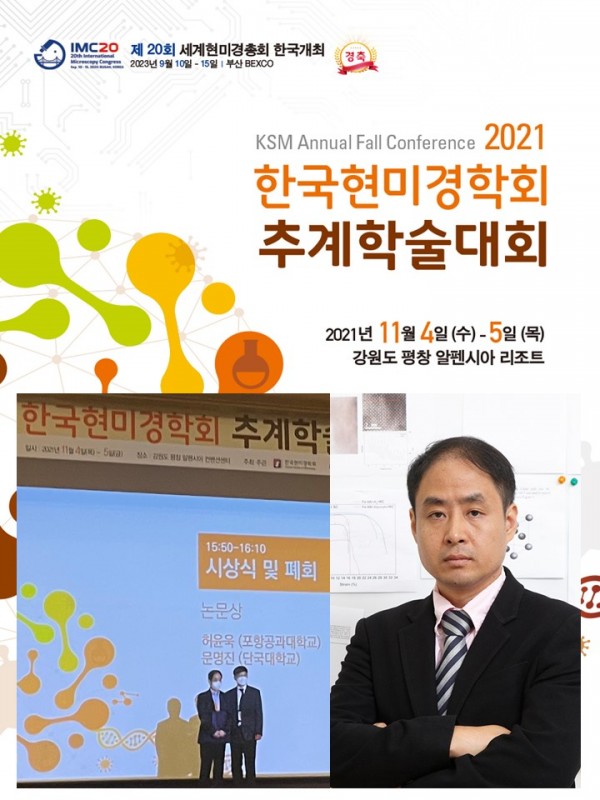Prof. Yoon-Uk Heo received the outstanding paper award in 2021 annual fall conference of Korean soci…
페이지 정보

작성자 최고관리자
댓글 0건 조회 942회 작성일 2021-12-14 10:09
본문
Prof. Yoon-Uk Heo received the outstanding paper award for his paper titled “Comparative study o n the specimen thickness measurement using EELS and CBED method” in 2021 annual fall conference of Korean society of microscopy (KSM)
As the strength of steel increases, the importance of understanding the fine structure in the steel matrix increases. Considering the resolution limit of analytical equipment, such fine structures, including nano-sized precipitates and dislocations, could be directly identified through the transmission electron microscope (TEM). However, statistical quantification of precipitates and dislocation is tackled due to the difficulty of thickness measurement in TEM specimens.
The thin foil thickness is generally measured using a TEM- convergent beam electron diffraction (CBED) method. Kossel-Möllenstedt (K-M) fringe under the two-beam condition is used to calculate thin foil thickness. This method is good enough to use broadly in metallic alloys, and the measurement accuracy is less than 2%. However, the K-M fringe is degraded as the dislocation density in the matrix increases by the mechanical deformation. Furthermore, the fine dispersion of precipitate in the matrix also hinders the clear identification of the K-M fringe. Therefore, the TEM-CBED method cannot apply in the deformed structure and the matrix having fine precipitates. Through the comparative study using TEM-CBED and electron energy loss spectroscopy (EELS), the possibility of thickness measurement using EELS was reassessed for future applications in the deformed metallic materials or fine precipitate-bearing materials. The result proved the good coherency between both methods with a difference of less than 5%. It is expected that the application of the EELS method will be contributed to the bridging microstructure and mechanical property in steel.
The Korean Society of Microscopy was established in May 1967 in Seoul for the purpose of promoting the dissemination and development of knowledge and promoting mutual friendship among members through research on the basics and applications of electron microscopy. Since the conference, the conference has been held every year. In 1997, it was approved as a corporation to contribute to industry promotion by improving the science and technology related to the basics and applications of electron microscopes. 2021 At the KSM Annual Fall Conference 2021 held from November 4 to 5, master's student Sang-Hoon Shin (ADL) also received the Excellent Poster Presentation Award under the theme of “Defect Analysis of the Base and Coating Layer Interface of Electrically Galvanized Steel Sheet”.
- 이전글Prof. Hyoung Seop Kim of GIFT was appointed as the president of the Society for Materials and Metals related fields one after another! 21.12.14
- 다음글Prof. Dong-Woo Suh of GIFT received the Minister's Commendation for Meritorious Persons from the Ministry of Science, Technology, and Information! 21.12.13
댓글목록
등록된 댓글이 없습니다.




